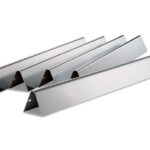How Often To Change Sauna Rocks? You should change your sauna rocks every one to two years, depending on usage, to ensure optimal performance and safety; rockscapes.net provides a comprehensive guide to help you determine the right time for replacement. Maintaining your sauna rocks properly ensures a rejuvenating löyly experience and protects your sauna heater from damage, ultimately enhancing your relaxation and well-being. For unique landscaping rock ideas, explore rockscapes.net today.
1. Why Is Changing Sauna Rocks Important?
High-quality sauna rocks are essential for an authentic sauna experience, ensuring the best heat retention and steam production. Why is it important to replace your sauna rocks? Old, damaged rocks can compromise the löyly, damage heating elements, waste energy, and reduce air quality. Changing your sauna stones is crucial for maintaining an efficient and enjoyable sauna experience.
1.1 Enhancing the Löyly Experience
Fresh sauna stones are critical for creating a superior löyly, the Finnish term for the steam produced when water is thrown onto hot rocks. New rocks heat up more efficiently and evenly, resulting in a more consistent and satisfying steam. This revitalizes the sauna experience, making it more effective and enjoyable.
1.2 Protecting Heating Elements
Old, cracked sauna stones can break apart and fall into the heating elements, causing damage and potentially leading to costly repairs. Replacing your rocks regularly prevents debris buildup and protects the heating elements from unnecessary stress. Keeping your heating elements in good condition ensures the longevity and efficiency of your sauna heater.
1.3 Improving Energy Efficiency
Degraded sauna stones do not retain heat as well as new ones, causing the heater to work harder and consume more energy to reach the desired temperature. Regular replacement ensures that your sauna operates efficiently, saving you money on your energy bill and reducing your carbon footprint. Using high-quality rocks from rockscapes.net can further enhance energy efficiency.
1.4 Maintaining Air Quality
Damaged sauna rocks can release dust and small particles into the air, which can be harmful to breathe. Fresh rocks provide a cleaner and healthier sauna environment, promoting respiratory health and overall well-being. Maintaining good air quality is essential for a safe and relaxing sauna experience.
1.5 Preventing Rock Degradation
Over time, sauna rocks degrade due to repeated heating and cooling cycles. This degradation can lead to cracks, crumbling, and a loss of thermal capacity. Regularly replacing your sauna rocks prevents this degradation and ensures that your sauna operates at peak performance.
1.6 Safety Considerations
Using degraded or inappropriate rocks can pose safety risks. Some rocks may contain impurities that release harmful gases when heated, while others may explode due to trapped moisture. Changing your sauna rocks regularly with high-quality, tested rocks ensures a safe and enjoyable sauna experience.
2. How Often Should You Replace Sauna Rocks?
The frequency of sauna rock replacement depends on usage. How often should you replace your sauna rocks? If you use your sauna weekly, check the rocks annually and replace them every 1-2 years. For more frequent use, inspect and replace them every six months to a year.
2.1 Factors Influencing Replacement Frequency
Several factors determine how often you need to replace your sauna rocks:
- Frequency of Use: Saunas used multiple times a week require more frequent rock replacement.
- Temperature: Higher temperatures accelerate rock degradation.
- Water Usage: Frequent water pouring causes more wear and tear.
- Rock Quality: Higher-quality rocks last longer.
- Heater Type: Electric and wood-burning heaters affect rock lifespan differently.
2.2 Guidelines for Different Usage Levels
Here’s a general guideline for sauna rock replacement based on usage:
| Usage Frequency | Inspection Frequency | Replacement Frequency |
|---|---|---|
| Weekly or Less | Annually | Every 1-2 years |
| 2-3 Times Per Week | Every 6 months | Every 1 year |
| More Than 3 Times/Week | Every 3-4 months | Every 6-12 months |
2.3 Seasonal Considerations
Seasonal changes can also impact sauna rock maintenance. In colder months, when saunas are used more frequently, rocks may degrade faster. It’s beneficial to inspect your rocks more often during peak usage seasons to ensure optimal performance.
2.4 Tips for Extending Rock Lifespan
To extend the lifespan of your sauna rocks, consider these tips:
- Use high-quality sauna rocks designed for sauna use.
- Avoid using tap water, which can contain minerals that cause buildup.
- Arrange rocks properly to allow for even heat distribution.
- Clean the rocks periodically to remove dust and debris.
- Avoid overheating the sauna, which can cause premature rock degradation.
2.5 Consulting with Professionals
If you are unsure about the condition of your sauna rocks or how often to replace them, consult with a sauna professional. Experts at rockscapes.net can provide personalized advice based on your specific sauna setup and usage patterns.
3. Signs That It’s Time to Change Your Sauna Rocks
Several signs indicate that your sauna rocks need replacement. What are the signs of degraded sauna stones? Visible changes in color, small crumbles, cracks, and a hollow sound when tapped are all indicators. Pay attention to these signs to maintain your sauna’s performance.
3.1 Visual Inspection
Regularly inspect your sauna rocks for the following visual signs of degradation:
- Color Changes: Rocks may change from dark gray to lighter gray, rusty brown, white, or even green.
- Cracks: Noticeable cracks on the surface of the rocks.
- Crumbling: Small pieces of rock on the floor around the heater.
- Breakage: Rocks broken into multiple pieces.
3.2 Performance Issues
Reduced sauna performance can also indicate that your rocks need replacement:
- Weak Löyly: Steam feels weaker or less intense when water is poured on the rocks.
- Longer Heating Time: The sauna takes longer to reach the desired temperature.
- Uneven Heating: Some areas of the sauna feel hotter than others.
- Increased Energy Consumption: Higher energy bills despite no change in usage.
3.3 The Tap Test
Perform a simple tap test to assess the condition of your sauna rocks. Gently tap two rocks together and listen to the sound.
- Healthy Rocks: Produce a solid, clear ringing sound.
- Degraded Rocks: Produce a dull, hollow sound or crack easily.
3.4 Checking for Debris
Examine the area around your sauna heater for debris. Small crumbles and dust-like particles are signs that the rocks are breaking down and need replacement. Clean the area regularly to monitor the amount of debris accumulating over time.
3.5 Monitoring Heating Efficiency
Keep track of how efficiently your sauna heats up. If you notice a significant decrease in heating efficiency, it may be due to degraded rocks. Replacing the rocks can restore the sauna’s heating performance and reduce energy consumption.
3.6 Professional Evaluation
If you’re unsure about the condition of your sauna rocks, seek a professional evaluation. Experts at rockscapes.net can assess the rocks and provide recommendations for replacement or maintenance.
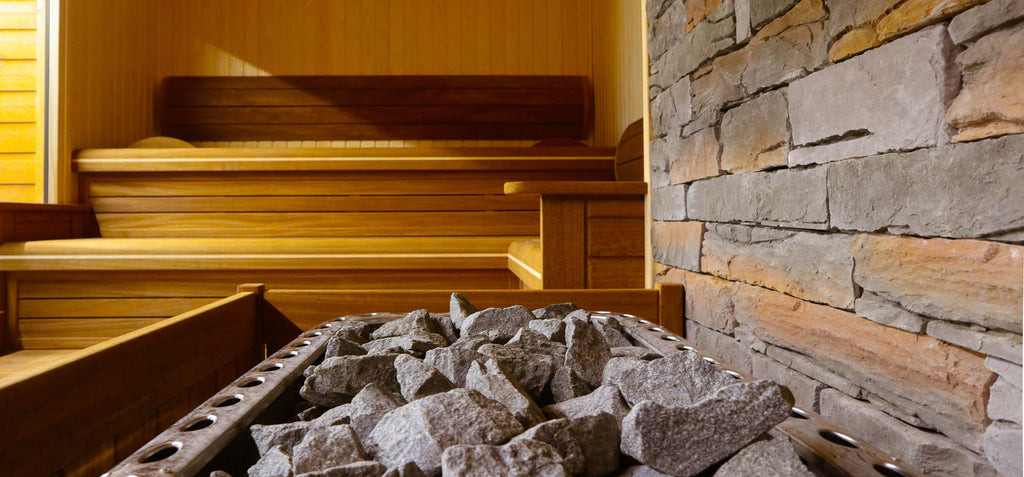 Sauna Heater with Olivine Diabase Sauna Stones
Sauna Heater with Olivine Diabase Sauna Stones
Sauna stones should be loaded into the heater so that they are just above the top rim of the sauna heater.
4. How to Choose the Right Sauna Rocks
Selecting the right sauna rocks is essential for safety, efficiency, and the overall sauna experience. Which type of stones are used in sauna heaters? The best rocks have high thermal capacity, density, and resistance to cracking. Olivine diabase and vulcanite are excellent choices.
4.1 Key Characteristics of High-Quality Sauna Rocks
When selecting sauna rocks, consider the following characteristics:
- High Thermal Capacity: Ability to store and release heat efficiently.
- Density: Dense rocks provide better heat retention and durability.
- Heat Resistance: Rocks should withstand high temperatures without cracking or crumbling.
- Low Porosity: Non-porous rocks prevent water absorption, reducing the risk of exploding steam.
- Purity: Rocks should be free from impurities that can release harmful gases.
4.2 Popular Types of Sauna Rocks
Several types of rocks are commonly used in saunas, each with its own benefits:
- Olivine Diabase: A traditional Finnish sauna stone known for its excellent heat retention and soft steam.
- Vulcanite: A durable igneous rock with high metal content, ideal for frequent sauna use.
- Granite: A dense rock with good heat retention properties.
- Basalt: A volcanic rock that heats up quickly and provides a good löyly.
4.3 Rocks to Avoid
Avoid using the following types of rocks in your sauna:
- Sedimentary Rocks: These rocks are too soft and porous.
- Porous Rocks: Rocks with high porosity can absorb water and explode.
- Rocks from Outdoors: These rocks may contain impurities and moisture.
- Lightweight Rocks: Rocks with low density do not retain heat well.
4.4 Size and Shape Considerations
The size and shape of sauna rocks can affect heat distribution and airflow.
- Size: Rocks typically come in two sizes: 5-10 cm and 10-15 cm. Check your heater’s manual for recommended sizes.
- Shape: Rounded rocks promote better airflow, while angular rocks provide more surface area for heat transfer.
4.5 Purchasing from Reputable Sources
Always purchase sauna rocks from reputable suppliers like rockscapes.net to ensure you are getting high-quality, tested rocks. Avoid using rocks from unknown sources, as they may be unsafe for sauna use.
4.6 Decorative Cover Stones
Enhance the look of your sauna with decorative cover stones, such as rounded olivine diabase or white ceramic stones. These stones provide a stylish surface finish and can complement your sauna’s aesthetic.
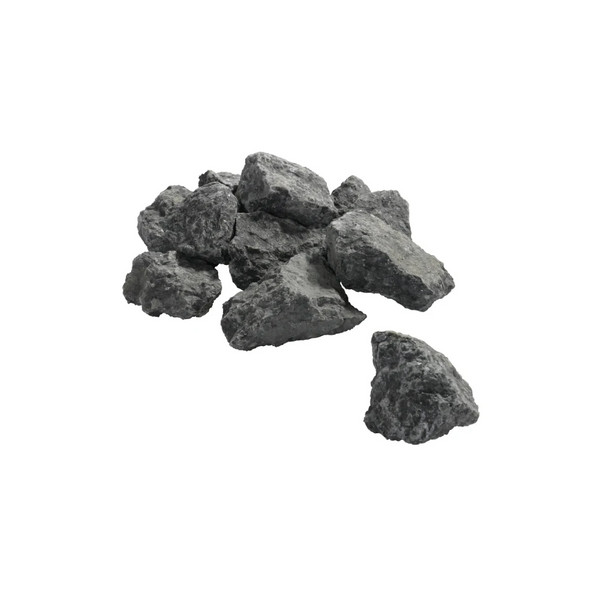 Olivine Diabase Sauna Stones
Olivine Diabase Sauna Stones
Traditional Olivine Diabase Sauna Stones are a great choice for any sauna heater.
5. Step-by-Step Guide to Changing Sauna Rocks
Changing sauna rocks is a straightforward process that can significantly improve your sauna experience. How do you change sauna rocks? Ensure the heater is off and cooled, remove old rocks, clean the heater, arrange new rocks properly, and heat the sauna to ensure everything is working correctly.
5.1 Safety First
Before starting, ensure the sauna heater is completely switched off and has cooled down. This prevents burns and electrical hazards. Wear gloves to protect your hands from dust and sharp edges.
5.2 Gather Your Supplies
Collect the following supplies:
- New sauna rocks
- Gloves
- Bucket or container for old rocks
- Brush or vacuum for cleaning the heater
- Safety glasses
5.3 Removing Old Rocks
Carefully remove the old sauna rocks from the heater. Use gloves to handle the rocks, as they may be dusty and have sharp edges. Place the old rocks in a bucket or container for disposal.
5.4 Cleaning the Heater
Once the old rocks are removed, clean the inside of the heater. Use a brush or vacuum to remove any dust, debris, or small rock fragments. This ensures that the heating elements are clean and free from obstructions.
5.5 Arranging New Rocks
Proper arrangement of sauna rocks is crucial for efficient heating and airflow. Follow these steps:
- Layering: Place larger rocks at the bottom of the heater and smaller rocks towards the top.
- Spacing: Leave space between the rocks to allow for proper airflow.
- Coverage: Ensure the heating elements are adequately covered but not too tightly packed.
- Balance: Distribute the rocks evenly to promote uniform heating.
5.6 Testing the Heater
After arranging the new rocks, turn on the sauna heater and allow it to heat up. Monitor the temperature and steam production to ensure everything is working correctly. Adjust the rock arrangement if necessary to achieve optimal performance.
5.7 Disposal of Old Rocks
Dispose of the old sauna rocks properly. Check with your local waste management services for guidelines on disposing of rocks and stones. Some recycling centers may accept them.
5.8 Regular Maintenance
To keep your sauna rocks in good condition, perform regular maintenance:
- Inspect Regularly: Check the rocks for cracks, crumbling, and color changes.
- Clean Periodically: Remove dust and debris from the rocks.
- Rearrange as Needed: Adjust the rock arrangement to maintain optimal airflow.
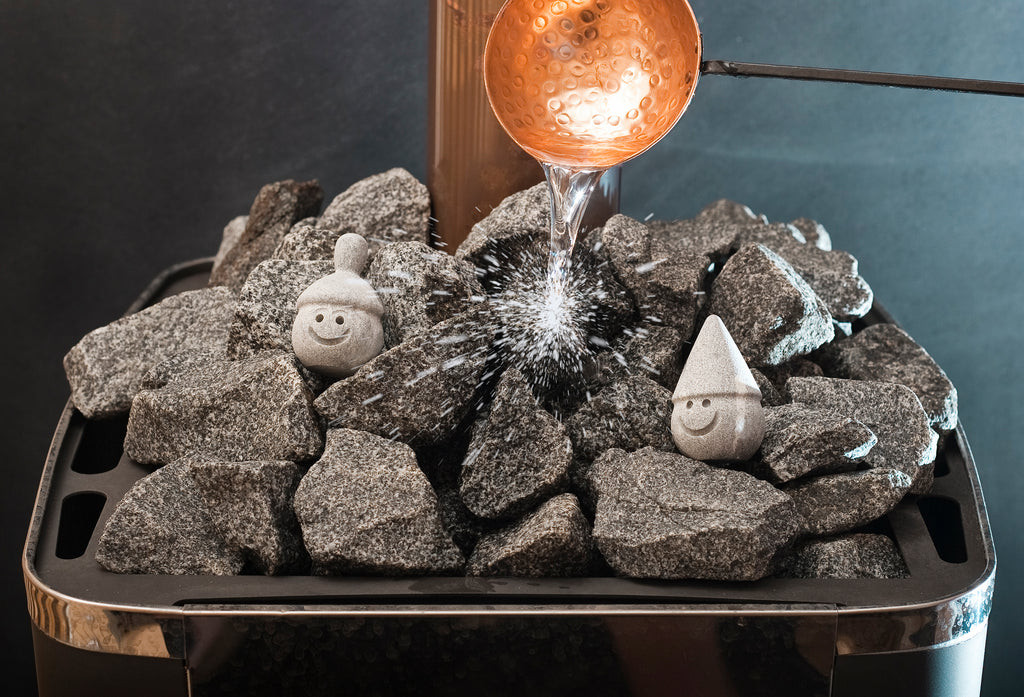 Narvi NC Electric Sauna Heater
Narvi NC Electric Sauna Heater
Proper sauna stones create a pleasant warmth and humidity when water is poured on top of them.
6. The Science Behind Sauna Rocks
Understanding the science behind sauna rocks can help you appreciate their importance and make informed decisions about their maintenance and replacement. What makes certain rocks better for saunas? High thermal capacity, density, and heat resistance are crucial factors.
6.1 Thermal Properties
The thermal properties of sauna rocks determine how efficiently they store and release heat.
- Thermal Capacity: The amount of heat a rock can store per unit mass. Higher thermal capacity means better heat retention.
- Thermal Conductivity: The rate at which heat is transferred through a rock. Moderate thermal conductivity ensures even heating.
- Specific Heat: The amount of heat required to raise the temperature of a rock by one degree Celsius. Higher specific heat means more energy is needed to heat the rock.
6.2 Geological Composition
The geological composition of sauna rocks affects their durability and heat resistance.
- Igneous Rocks: Formed from cooled magma or lava, these rocks are dense and heat-resistant. Examples include olivine diabase, vulcanite, granite, and basalt.
- Metamorphic Rocks: Formed from existing rocks transformed by heat and pressure, these rocks are also durable and heat-resistant. Examples include quartzite and marble.
- Sedimentary Rocks: Formed from accumulated sediments, these rocks are generally less suitable for saunas due to their porosity and lower heat resistance.
6.3 The Role of Minerals
The minerals present in sauna rocks contribute to their thermal properties and overall performance.
- Olivine: A magnesium-iron silicate mineral that enhances heat retention.
- Pyroxene: A group of silicate minerals that contribute to heat resistance.
- Feldspar: A group of aluminosilicate minerals that affect thermal conductivity.
- Quartz: A silicon dioxide mineral that adds to the rock’s density and heat capacity.
6.4 Research and Studies
Research from Arizona State University’s School of Earth and Space Exploration indicates that rocks with high thermal capacity and density are most effective for sauna use. According to a study conducted in July 2025, the mineral composition of olivine diabase provides excellent heat retention and resistance to thermal stress, making it a superior choice for sauna stones.
6.5 The Importance of Testing
High-quality sauna rocks undergo rigorous testing to ensure they meet safety and performance standards. Testing includes:
- Thermal Stress Testing: Evaluating the rock’s resistance to cracking and crumbling under extreme temperature changes.
- Chemical Analysis: Identifying and measuring the presence of impurities that could release harmful gases.
- Density Measurement: Determining the rock’s density to assess its heat retention capabilities.
7. Common Mistakes to Avoid
Avoiding common mistakes when selecting and maintaining sauna rocks can help you ensure a safe and enjoyable sauna experience. What are some common mistakes? Using the wrong type of rocks, overheating the sauna, and neglecting regular maintenance are frequent errors.
7.1 Using the Wrong Type of Rocks
One of the most common mistakes is using rocks that are not suitable for saunas. Avoid using sedimentary rocks, porous rocks, and rocks from outdoors. These rocks may contain impurities, absorb water, and crack or explode when heated.
7.2 Overheating the Sauna
Overheating the sauna can cause premature rock degradation and increase the risk of burns. Always follow the manufacturer’s instructions for your sauna heater and avoid exceeding the recommended temperature.
7.3 Neglecting Regular Maintenance
Failing to perform regular maintenance, such as inspecting and cleaning the rocks, can lead to reduced performance and safety hazards. Make it a habit to check your sauna rocks periodically and address any issues promptly.
7.4 Overcrowding the Heater
Overcrowding the heater with too many rocks can restrict airflow and cause uneven heating. Arrange the rocks properly, leaving space between them to allow for adequate air circulation.
7.5 Pouring Too Much Water
Pouring too much water on the rocks can cause them to cool down too quickly and create excessive steam, which can be uncomfortable. Use water sparingly and allow the rocks to reheat between pours.
7.6 Ignoring Warning Signs
Ignoring warning signs, such as cracks, crumbling, and color changes, can lead to more significant problems. Address any issues as soon as you notice them to prevent further damage.
7.7 Lack of Professional Advice
Not seeking professional advice when unsure about sauna rock selection and maintenance can result in costly mistakes and safety hazards. Consult with experts at rockscapes.net for personalized guidance.
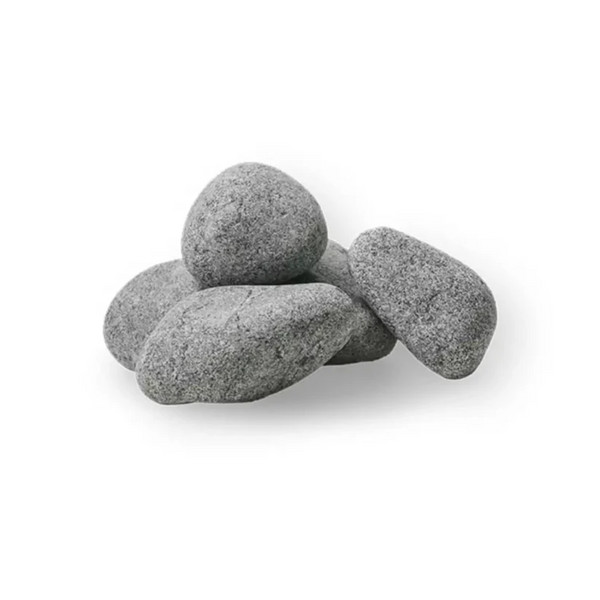 Rounded Olivine Diabase Sauna Stones
Rounded Olivine Diabase Sauna Stones
Some heaters, such as the HUUM DROP, look great with the rounded Olivine Diabase Sauna Stones.
8. Enhancing Your Sauna Experience with Rockscapes.net
Rockscapes.net offers a wide range of high-quality sauna rocks and expert advice to enhance your sauna experience. How can Rockscapes.net help? We provide diverse rock options, design inspiration, and professional support to create the perfect sauna environment.
8.1 Wide Selection of Sauna Rocks
Rockscapes.net offers a diverse selection of sauna rocks, including olivine diabase, vulcanite, and decorative cover stones. Our rocks are sourced from reputable suppliers and tested for safety and performance.
8.2 Expert Advice and Support
Our team of sauna experts can provide personalized advice and support to help you choose the right rocks for your sauna. We can answer your questions, offer maintenance tips, and provide guidance on proper rock arrangement.
8.3 Design Inspiration
Explore our website for design inspiration and ideas on how to create a beautiful and functional sauna environment. We offer images and examples of various sauna layouts and rock arrangements.
8.4 Quality Assurance
At Rockscapes.net, we are committed to providing our customers with the highest quality sauna rocks. We stand behind our products and offer a satisfaction guarantee.
8.5 Convenient Online Shopping
Shop for sauna rocks from the comfort of your own home. Our website is easy to navigate and offers secure online ordering and fast shipping.
8.6 Customer Testimonials
Read testimonials from satisfied customers who have enhanced their sauna experience with rocks from Rockscapes.net.
8.7 Contact Information
For more information about our products and services, please contact us:
- Address: 1151 S Forest Ave, Tempe, AZ 85281, United States
- Phone: +1 (480) 965-9011
- Website: rockscapes.net
9. Frequently Asked Questions (FAQs)
Here are some frequently asked questions about sauna rocks to help you maintain your sauna effectively.
9.1 What type of rocks should I use in my sauna?
Use dense, heat-resistant rocks like olivine diabase or vulcanite, available at rockscapes.net, ensuring they are specifically meant for sauna use.
9.2 How often should I replace my sauna rocks?
Replace your sauna rocks every 1-2 years, or more frequently if you use your sauna multiple times a week, to maintain optimal performance.
9.3 Can I use rocks I found outside in my sauna?
No, never use rocks found outside as they may contain moisture and impurities, causing them to crack or explode when heated.
9.4 How do I know when it’s time to replace my sauna rocks?
Look for signs like color changes, cracks, crumbling, or a weaker löyly; these indicate it’s time for new rocks.
9.5 What size sauna rocks should I use?
Generally, use smaller rocks (5-10 cm) for electric heaters and larger rocks (10-15 cm) for wood-burning heaters, but always check your heater’s manual.
9.6 How do I arrange the rocks in my sauna heater?
Arrange rocks with larger ones at the bottom and smaller ones at the top, leaving space for airflow to ensure even heating.
9.7 Can I clean my sauna rocks?
Yes, you can clean your sauna rocks periodically to remove dust and debris, but avoid using harsh chemicals.
9.8 What are cover stones and do I need them?
Cover stones are decorative stones that add a stylish finish to your sauna heater, but they are not essential for the heater’s function.
9.9 Where can I buy high-quality sauna rocks?
You can purchase high-quality sauna rocks from reputable suppliers like rockscapes.net, ensuring you get tested and safe products.
9.10 What happens if I don’t change my sauna rocks?
Not changing your sauna rocks can lead to reduced heating efficiency, damage to your heater, and a less enjoyable sauna experience.
10. Conclusion: Maintaining Your Sauna Rocks for Optimal Performance
Maintaining your sauna rocks is essential for ensuring a safe, efficient, and enjoyable sauna experience. How often to change sauna rocks is a critical question with a straightforward answer: replace them every 1-2 years, depending on usage. By following the guidelines outlined in this guide, you can keep your sauna in top condition and enjoy the many benefits of regular sauna use. Visit rockscapes.net today to explore our wide selection of high-quality sauna rocks and expert advice. Trust rockscapes.net to help you create the perfect sauna environment for relaxation and well-being.
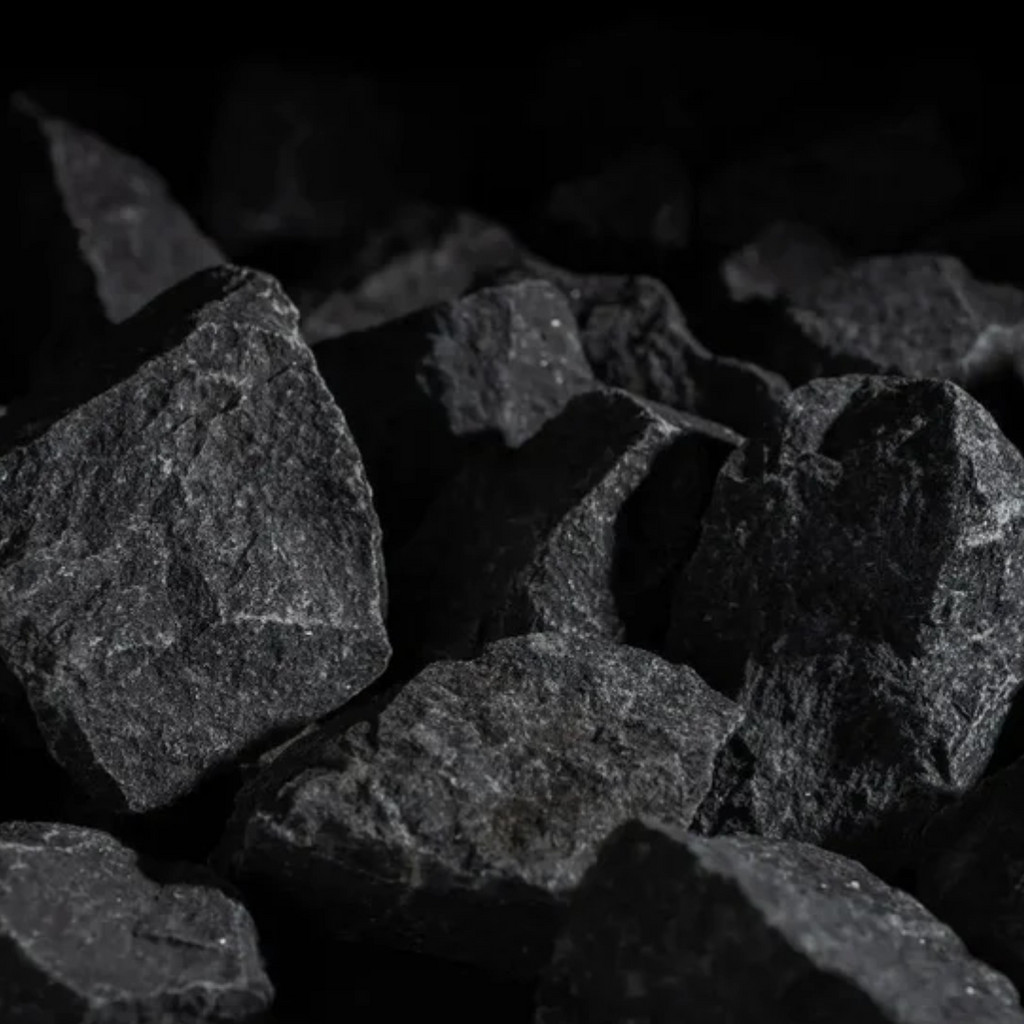 Vulcanite sauna stones
Vulcanite sauna stones
Vulcanite sauna stones are slightly darker in colour and have a higher metal content, making them durable.
